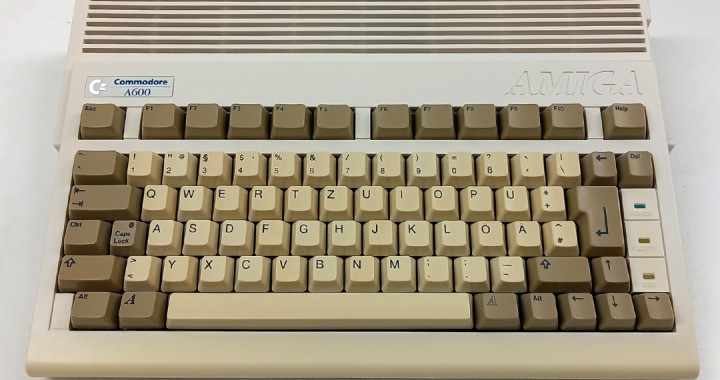The Commodore Amiga 600 is a 16 -bit home computer, based on the Mc68000 Motorola processor. It was produced by Commodore International from 1992 to 1993. Other names with which the Amiga 600 is known are: Commodore A600, CBM A600.

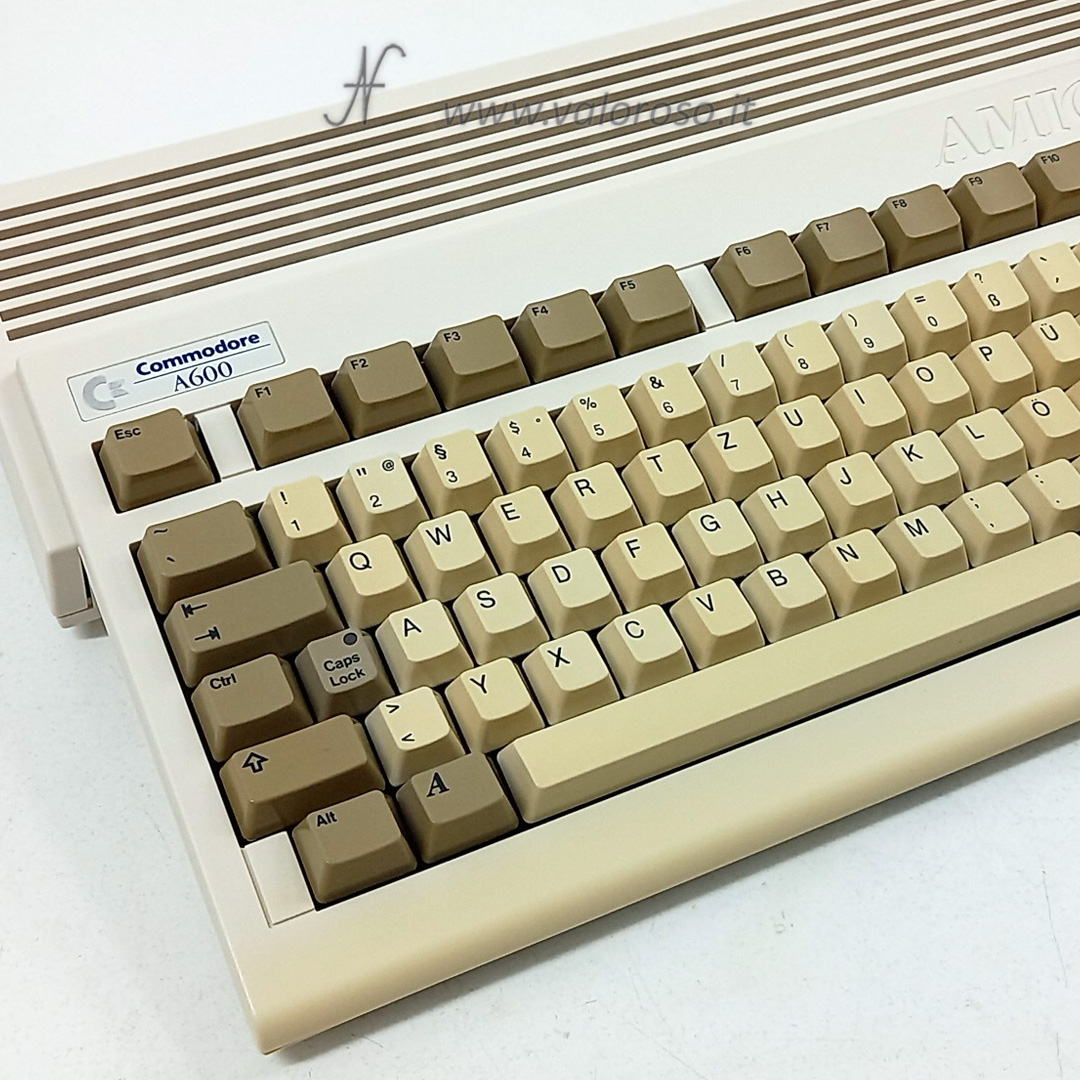
In my vintage computer collection they were missing ... of the Commodore Amiga. So, I decided to buy this back computer, together with other computers, in the summer of 2021. Here is the video of the bought lot:
The Commodore Amiga 600 is equipped with the original combined Commodore mouse. In addition to the mouse, in the purchased lot there is also the transparent custody for the keyboard and a PCMCIA Compact Flash reader. Inside, instead of the mechanical hard disk, there is a more recent 4GB compact flash, with appropriate ideal adapter. The keyboard has a German layout.
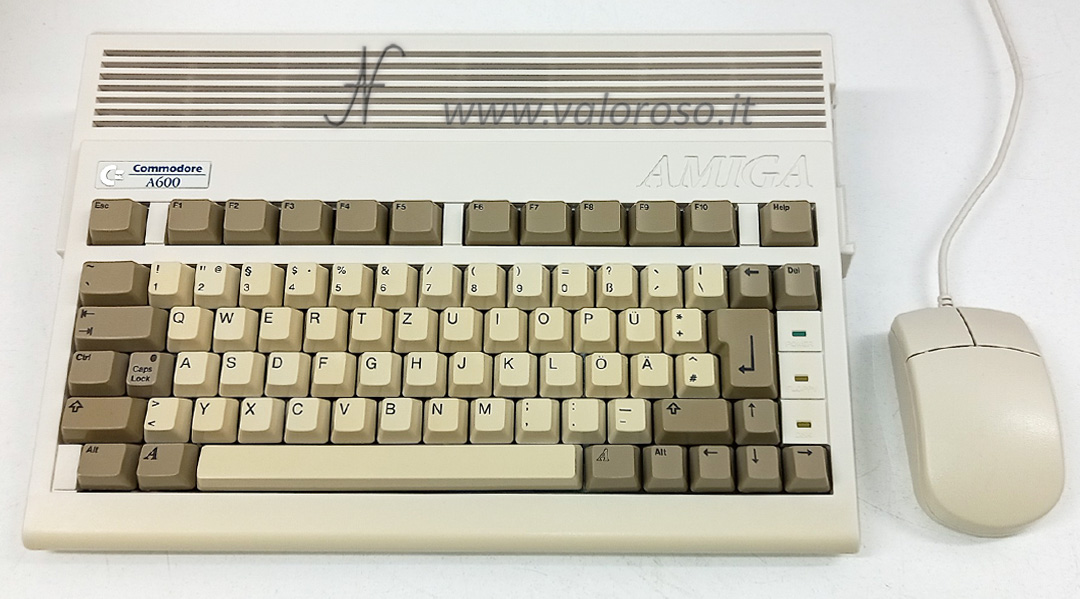
I had to work a little on this Commodore Amiga 600. First of all, occasionally, it did not turn on. I discovered that there was a defective welding on the printed circuit, relating to the power connector. In addition, I had to make a complete Recap: the capacitors had started to lose the electrolyte liquid and could have corrode the tracks of the printed circuit.
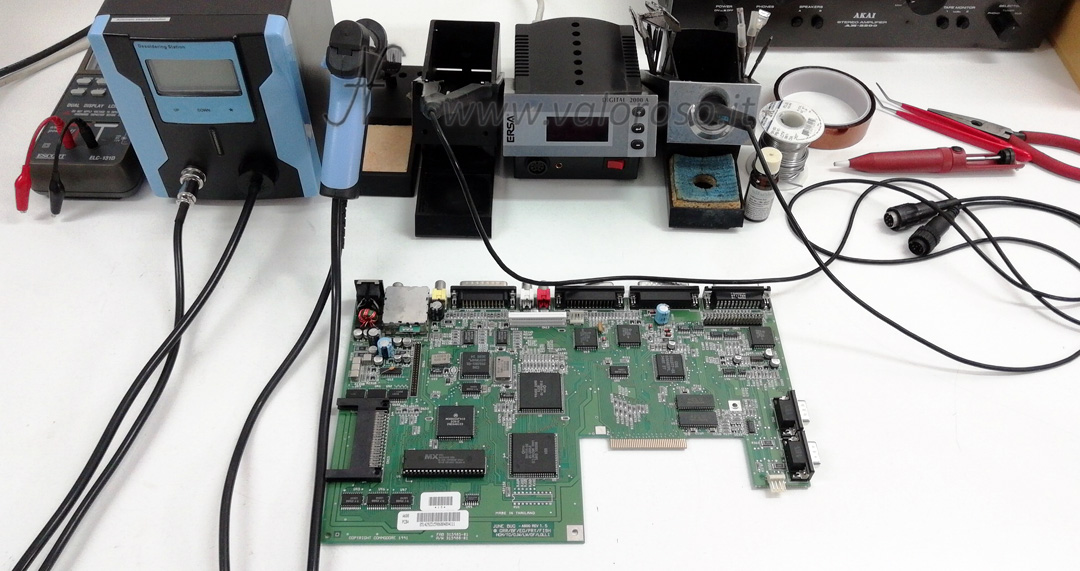
Technical characteristics of the Amiga 600
CPU: Motorola MC68000, 7.09379 MHz (PAL) or 7.15909 MHz (NTSC)

Chipset ECS (Enhanced Chip Set): MOS 8375 / CSG 318069 Fat Agnus (memory controller and blitter), MOS 8373 / CSG 391081 Super Denise (video), MOS 8364 / CSG 391077 Paula (audio and I/O), CSG 391155 Gayle (I/O and IDE interface)
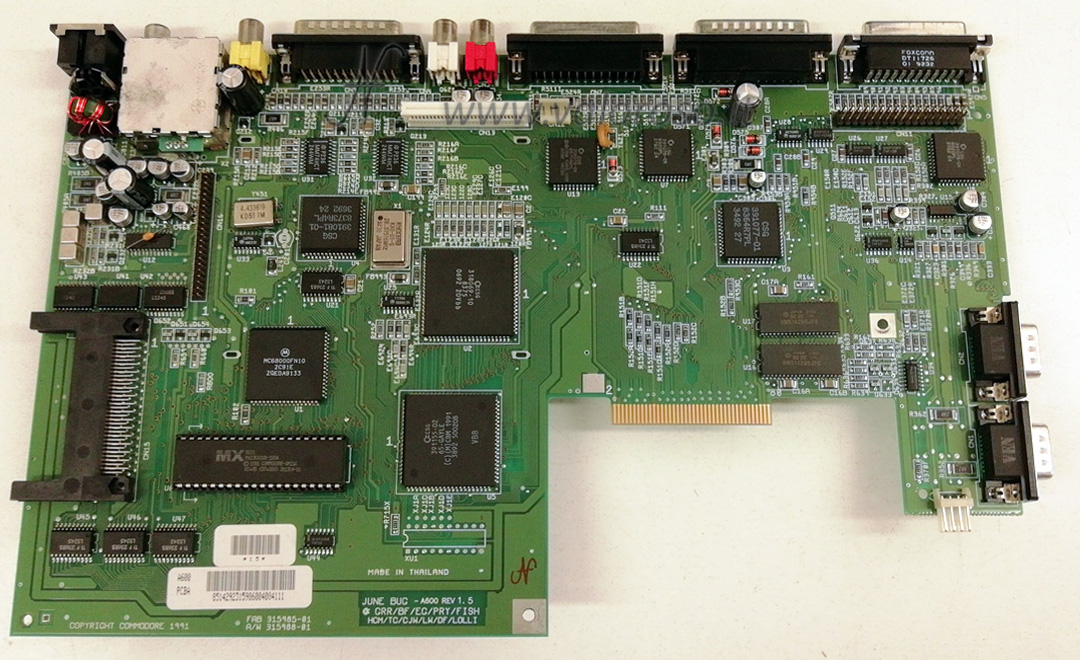
ROM: 512 KB
Software included in ROM: Kickstart 2.0 (on my computer, there is version 2.05 37,300)
RAM: 1 MB expandable

Graphics: MOS 8373 / CSG 391081 Super Denise
Graphics mode: 320x200 to 1280x512, up to 4096 of colors, scan installment horizontal 15khz - 31 kHz, Sunfish vertical installments: 50 Hz - 72 Hz
Audio: MOS 8364 / CSG 391077 Paula, 4ch, stereo output
Keyboard: 78-key QWERTY, with arrows and function keys
Expansion ports (internal):
- 1 connettore IDE 44 pin, per hard disk 2.5"
- 1 connettore 34 pin per floppy disk 3.5"
- 1 x 80-pin expansion slot, accessible from the bottom door
Expansion ports (external):
- 1 PCMCIA, Type II, 68-pin

- 1 external floppy disk drive, DB23 female
- 1 serial DB25 male, RS232
- 1 parallel DB25 female, Centronics
- 2 RCA stereo audio
- 1 x DB23 male video, analog RGB
- 1 RCA CVBS composite video
- 1 RCA antenna (RF to TV connection)

- 2 mouse and joystick, DB9 male
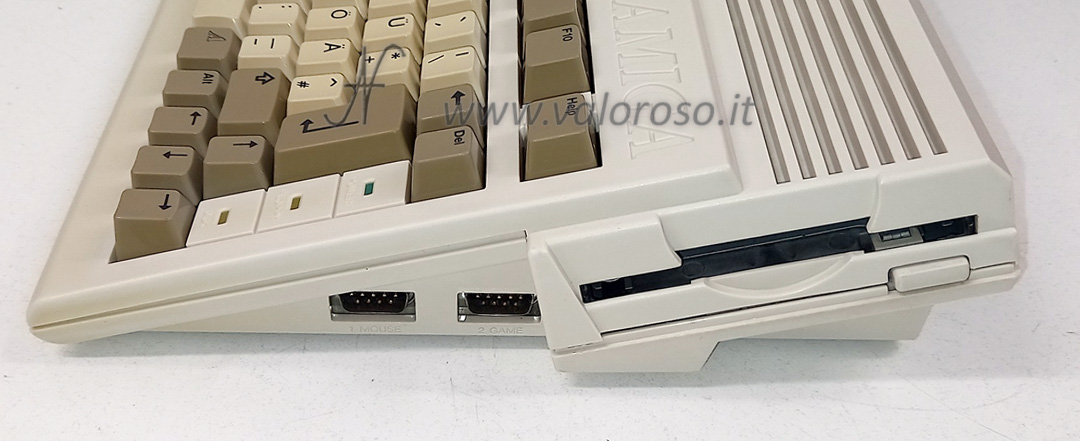
Emulation
It is possible to emulate the Amiga 600, as well as the other models of Amiga computers, on a common Windows PC, via Winuae. In this way, it is possible to try to start programs and games, as well as program the back computer, in a simple and comfortable way ... without even having the Amiga! Winuae is provided without workbench and without Kickstart Rom, which must be downloaded separately, looking for them on the internet.
600 power supply
The power supply of the Commodore A600 is external and has the following output voltages:
- 5V direct current, 3A
- 12V direct current, 500mA
- -12V direct current, 100mA
View of the power steering wheel connector, contact side.
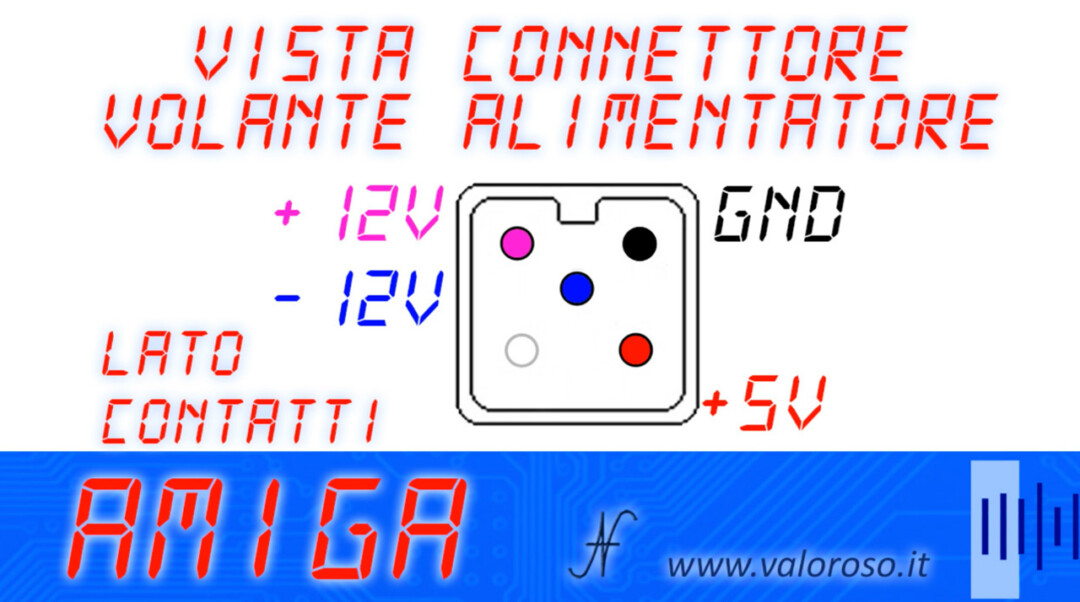
Starting screen of the Amiga 600
The Commodore A600 has a proper operating system, windowed. For this reason, it is not easy to determine which is to consider the actual start screen.
If the hard disk is not present and no disk is inserted, the Amiga 600 starts with the screen that requires the insertion of a boot disc.
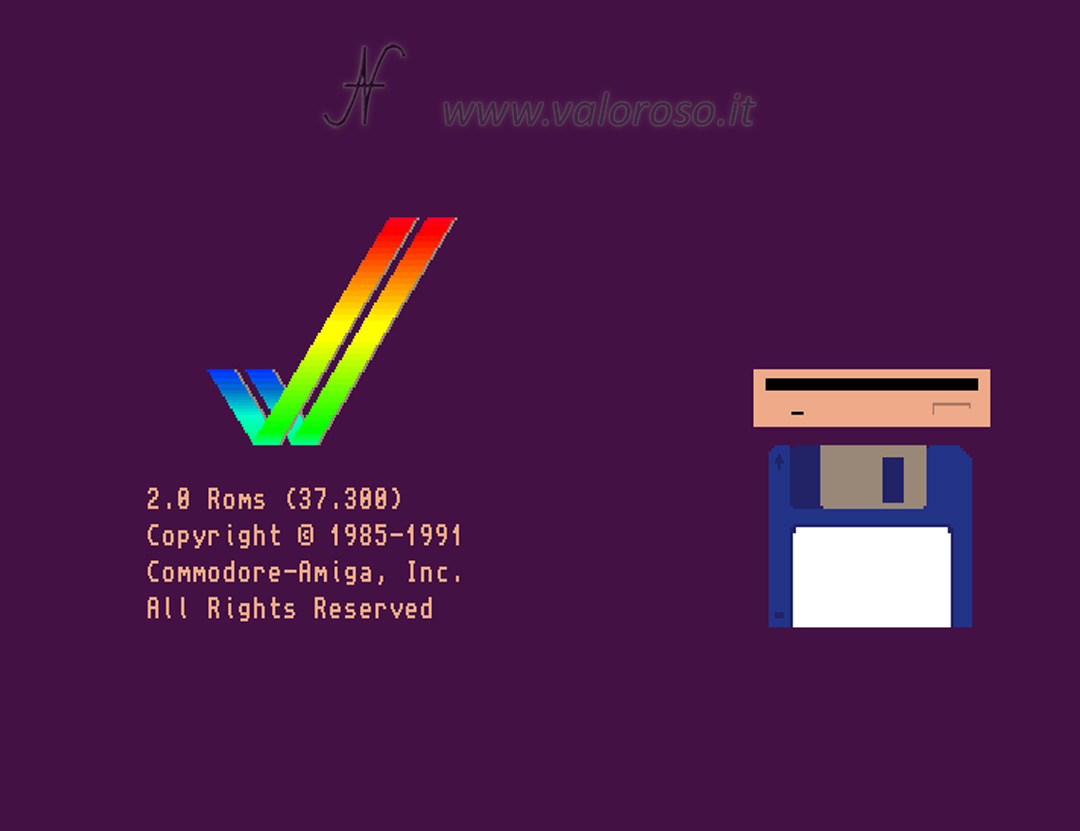
From here, little can be done, if not insert a start of start -up or install a hard disk with the workbench, which is then the desktop environment available on Amigaos (the Amiga platform operating system).

To select which peripheral to make the bitot of the Amiga (600 or 1200), it is possible to hold both the mouse keys to the lighting, as explained, in detail, in this article. The Amiga starts with the screen of the Boot Menu.
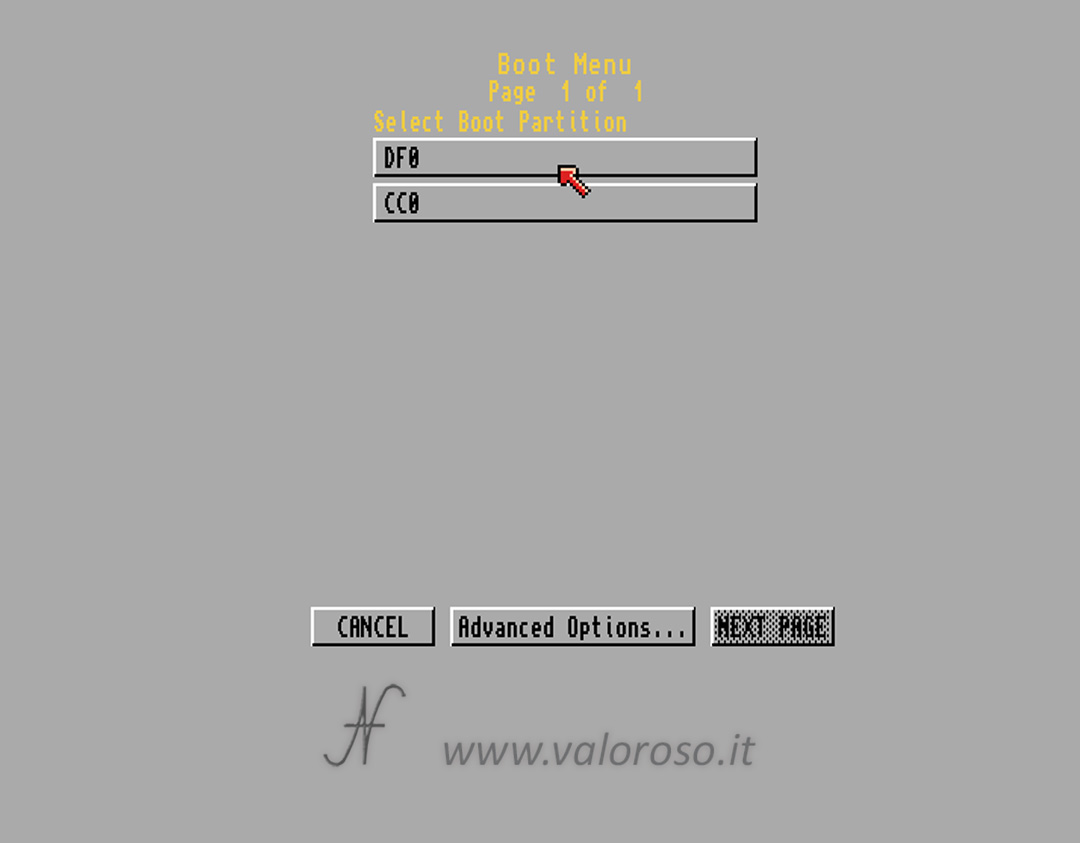
The Workbench screen depends on the version of the same. Although also working with other versions of the workbench, the A600 came out with the Workbench version 2.05.
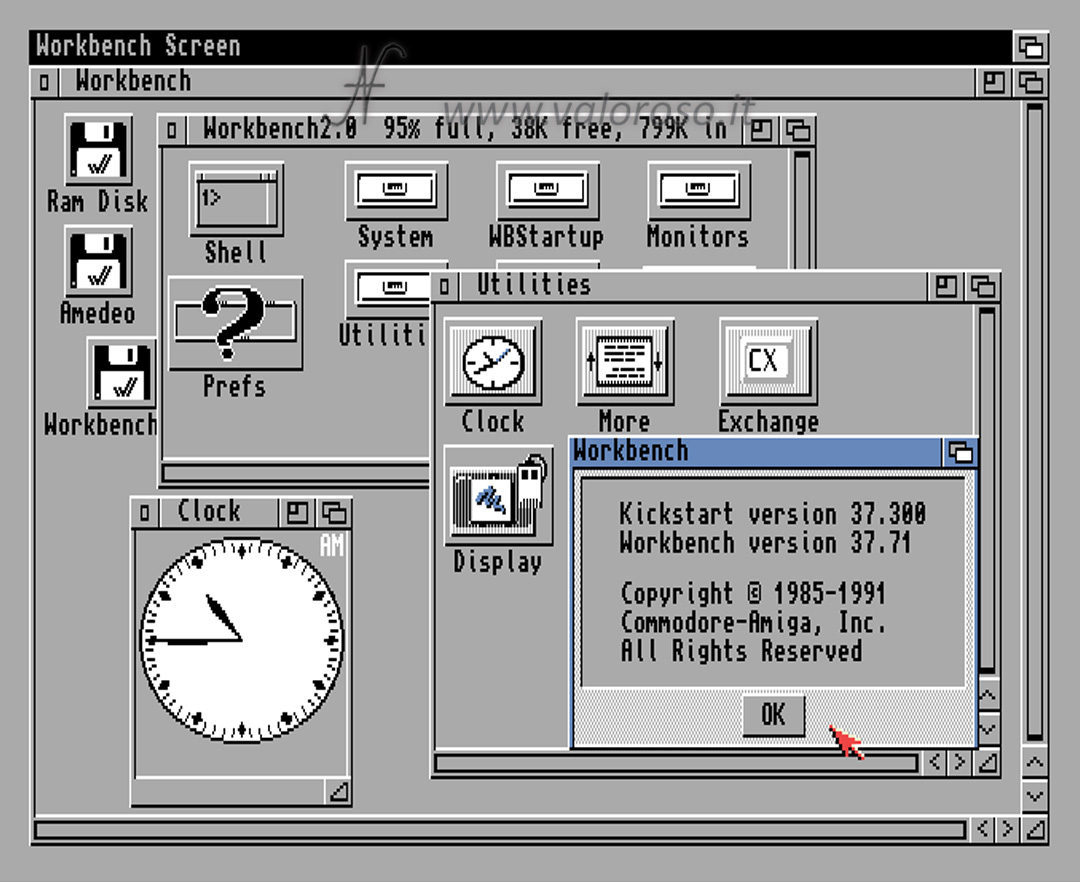
Papers
- Commodore A600 introduzione (ITA)
- Commodore A600 user's guide by Peter Hutchinson
- A600 schematics
- Workbench 2.0 using the system software
- Commodore Amiga BASIC
